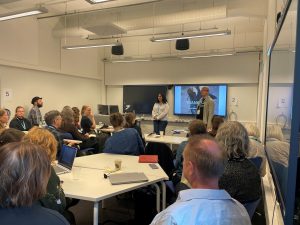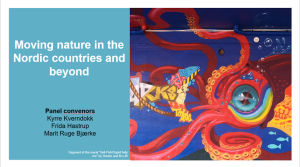In June, Kyrre, Frida and Marit from Gardening the Globe hosted a panel entitled Moving nature in the Nordic countries and beyond at the 36th Nordic Ethnology and Folklore Conference. The background for the panel was how the transport of plants, animals, minerals, and other natural substances has played an important part in creating present day environmental problems such as climate change, pollution and biodiversity loss. In this sense, we might say that moving nature characterizes the present environmental situation often referred to as the Anthropocene.

The panel consisted of three sessions, and covered a number of topics, such as Swedish settlers shaping landscapes in Argentina (Jenny Ingridsdotter), relations between sheep and humans in Gotland (Gurbet Peker), the use of ex situ practices in plant conservation (Katarina Saltzman), the relocation of reindeer from Sápmi to Alaska (Charlotte Hyltén-Cavallius), Finnish goldrushes and their role in colonial exploitation (Saga Jacksen), voluntary work to conserve threatened birds in agricultural landscapes (Elin Lundquist), the role of ticks in understandings of nature and society (Alicja Staniszewska), the transport of energy from periphery to center (Yngve Nilsen), and slug eradication as community building (Kyrre Kverndokk).
Based on the papers, we were able to have some very interesting discussions about the trans-local networks that the Nordic practices have been part and what would specify a Nordic Anthropocene.

